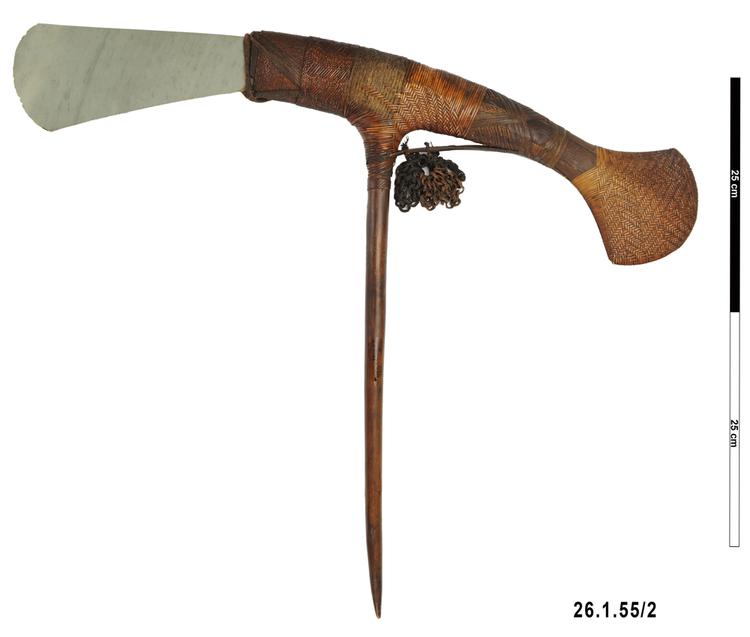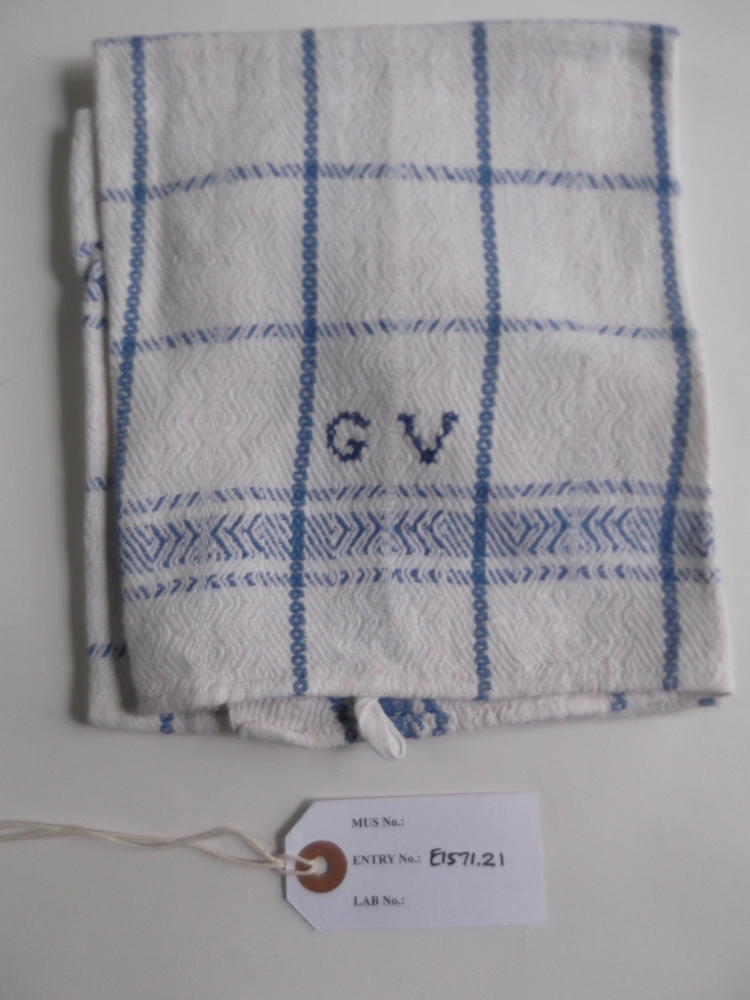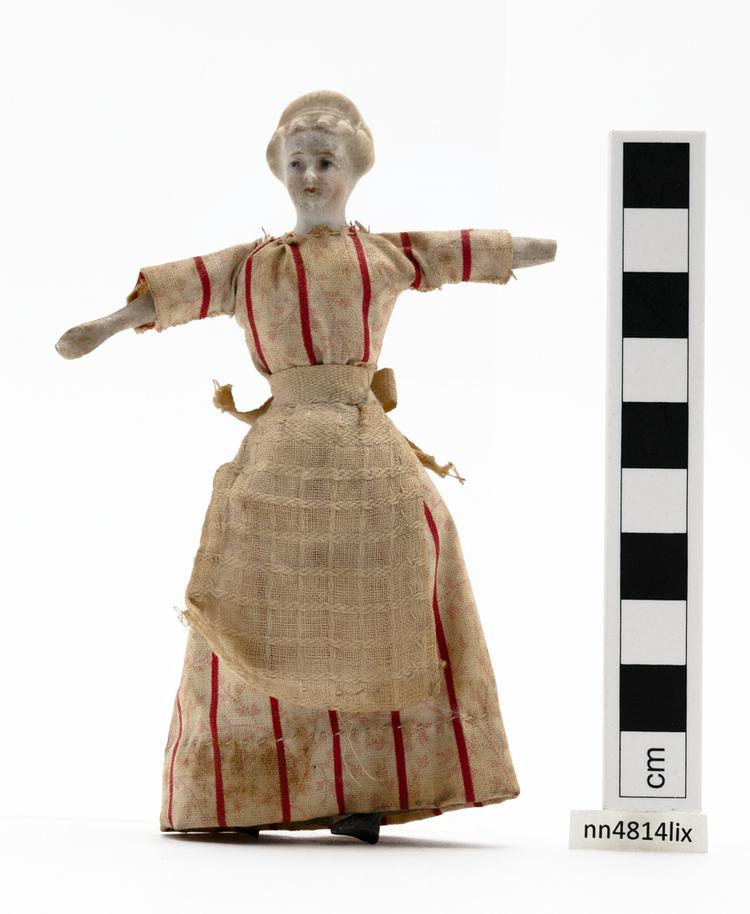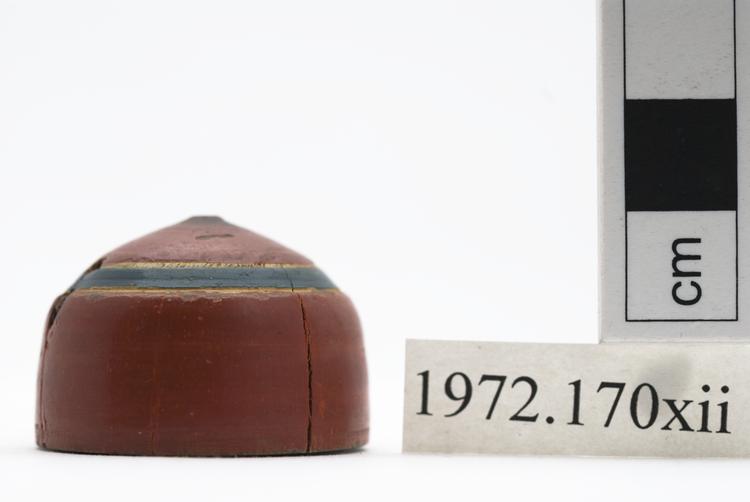
Ceremonial axe, used as currency. It has a straight, tapered haft, and a curved head that is covered with woven plant fibre. The back of the head ends in a projection that is shaped like a curved axe blade. A removable grey-green stone blade, triangular in shape with a curved edge, fits into a socket on the front of the axe head.
Ceremonial Currency Axe, Melpa people, Mt. Hagen District, Western Highlands, Papua New Guinea Stone-bladed axes were an important form of currency in several parts of New Guinea, but they were particularly large and finely made in the Mount Hagen district of the Western Highlands. At the time this example was collected, there were some forms of ceremonial payment – the paying of bride-wealth to secure a woman’s hand in marriage, and the paying of compensation to a murdered man’s family – which could only be paid in axes. The axes themselves were essentially viewed by the Melpa as the blades, even the most elaborately carved and woven hafts being only supplementary. The greenstone for such blades came only from two open-cast quarries in the Mount Hagen area. Men desiring to make an axe were required to undertake a lengthy trek to acquire the stone ‘blank’ itself, and spend hours intensively grinding it into its smooth finished form on sandstone boulders in the cold shallows of a nearby river. The finished product was quite beautiful. Nephrite stone, wood, vegetable fibre. Mid-20th Century. Formerly in the private collection of Mr W. C. Hall.
fighting






